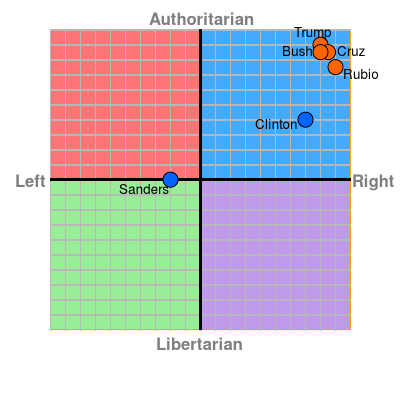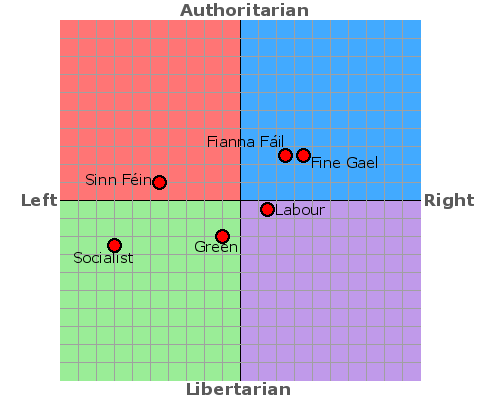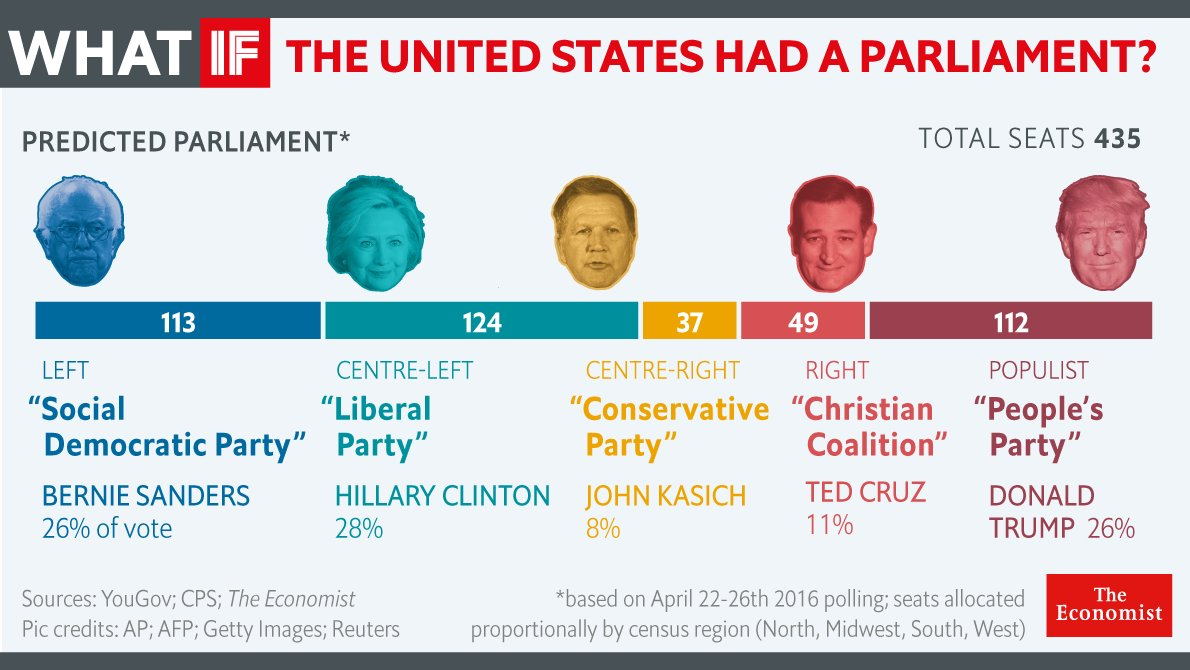We're watching the results come in for the national election in Norway. As an American abroad, here's what strikes me as funny:
The Labor party is neck-in-neck with the conservative Right party. The Labor party is doing very well on their platform of "higher taxes". Yes, they are promising to raise taxes, and Norwegians are rallying behind them. Awesome huh? The Right party is promising to lower taxes by privatizing parts of government... sound familiar my fellow Americans? But Norwegians know that privatizing services like nursing homes, construction and kindergartens will end up costing folks more in the long run... a LOT more. Norwegians would rather pay high taxes and reap the benefits of excellent government services.
It will be exciting to see how this plays out!
By the way, there are 21 political parties in Norway. 8 parties are in the national government. The Labor party and the Right are the largest, with about 25-30% each. In order to pass legislation, the parties have to build coalitions in order to get a majority.
One of the financial prognosticators I follow, can't remember which, said it was stupid to keep arguing about how the poor and rural south keeps voting "against their interests." His point? OF COURSE they were voting against their interests. They were voting their VALUES, just the same as the snooty Manhattanites with six and seven figure incomes voting for higher taxes and social programs they'll never use. People don't vote their self-interests, they vote their self-image - "I am a friend of the proletariat, even if I own two BMWs." "I am a believer in free-market capitalism, even if I live in a used single-wide trailer." Except so much of the conservative platform these days is reductive. Against this, against that. Scott Anderson makes the point in Fractured Lands (tacocat) that prior to the Arab Spring, so much of the political engagement in the Middle East was against things, not for them - against Israel, against America, against Jews, against Shia. Once the dictators fell, the only logical path was sectarian violence because really, that's what first the Ottomans and then the West were containing for the past 500 years. So it's easy to say that American "values" are against reproductive rights, against the rights of women, against the rights of minorities, against a strong social fabric. But then you look at how a 7% majority is necessary to have more than 50% of house and senate and gubernatorial seats because of gerrymandering and you recognize that in the US, it isn't even really about "values" so much as it's about dirty tricks and oligarchy. And then you give more money to the NDRC but you know in your heart of hearts it'll never be enough.Yes, they are promising to raise taxes, and Norwegians are rallying behind them. Awesome huh?
I'm very interested to learn more about the issue of redistricting. I just shared with a friend my optimism for the coming Supreme Court case regarding the constitutionality of partisan gerrymandering. Previous opinions and on-the-record statements by Justices suggest that partisan gerrymandering is probably unconstitutional, though has stayed on the books because there is no reliable legal standard to determine what clearly constitutes it. A few promising standards have been developed in the last few years (having to do with statistical analyses... I can provide a link to an explanation, but suffice it to say that the standard for partisan gerrymandering has to be a bit more rigorous than "you'll know it when you see it.") This friend I'm talking to just wrapped up a yearlong stint at the National Governors Association, having met a large number of governors and their aides. He's not a professional political scientist, nor a statistician. But he says that, according to some insiders he rubs shoulders with, gerrymandering is partially working to Democrats favor insofar as the Republican advantage is geographic, so drawing maps that are "contiguous" and not gerrymandered would favor the Republicans. See What This 2012 Map Tells Us About America, and the Election.
I would argue that if you want to have a lasting impact on local, state and federal governance and, therefore, society, getting involved in gerrymandering and redistricting is probably the most efficient place to work. You're a white kid in a black neighborhood in Baltimore. This is exactly where you should be putting your energies.
Or we could throw out hundreds of legislators and elect a Brand New Congress. I love the pluck of these people, and idea that a lot of small efforts will add up to one big result. I hope this gets some momentum and becomes A Thing.
Not sure how I feel about this. What's to stop the Brand New Congress from turning into the Old Congress? It seems like there's a systemic problem re: congressmen turn into professional fundraisers who entertain a revolving door of lobbyists. Also, the issue is that state legislatures and governors are able to draw congressional districts more or less however they want, creating all-but-assured partisan victories where the congressman is picked in district primaries, which we all know pulls candidates further right (or left) of center. I feel like this Brand New Congress would sour, no matter how idealistic its inaugural class is, within a few election cycles. I'm not convinced this is a feasible or worthwhile solution. Granted I, too, think the current arrangement is a metastatic cancer so ¯\_(ツ)_/¯
The big idea behind BNC is to replace career politicians with real people who have actually held a job at some point in their life, and have some grasp on the reality everyday Americans face. Congresscritters are so inured and shielded against facing the everyday issues everyday people face - healthcare, transit, rent, job searches, etc. - that they spend their time dealing with moronic statues in parks, rather than addressing anything of material value. In addition, the longer you are in Congress, the less work you do. As you become more senior, more of your time is taken up with fundraising and meeting with lobbyists, because seniority = power. If you replace half of Congress with actual Americans who have had jobs (recently) and lived in the real world, the thought is that the cycle of politician-lobbyist-fundraiser could be broken, or at least drastically altered. In short, the system is ineffective. Small changes (See: Tea Party) will have no meaningful effect. So BNC is attempting to address the problem in a big way, that is statistically and practically possible... it just needs a head of steam, which is hard to drum up when people are so politically tired, right now. And this may be its biggest hurdle. But, hey, when something goes viral, change can happen realdamnquick. So maybe there's a chance...
I have suggestions, but they are all too drastic to ever be entertained. The least objectionable I can come up with is have each elected official be under the direct observation of a third party they can in no way influence, and if that person decides that they are corrupt, out they go and a special election is held.What's to stop the Brand New Congress from turning into the Old Congress?
The videos from the workshop the Metric Geometry and Gerrymandering Group at Tufts did last month are well worth watching.
Thank you! That YouTube channel has talks from two different academics whose work has been cited in cases advancing to the SCOTUS this session.
I'm not too politcally well-versed, but it seems that never stops most people from giving their opinions! So here's a cynical and ill-informed rundown: Fianna Fáil and Fine Gael: the two main political parties, bunched together here because they're the same damned party. Really. Shortly before Ireland became Ireland, they split up because one side was in favour of a certain treaty with Britain and the other wasn't (i.e. one side insisted on fighting for the entire island, the other one said we were glad to get most of it). This was close to a hundred years ago, and pretty much ever since, one or the other has been in power, despite there being seemingly no difference between the two. Labour: the social democrat party that faced ruin in the last election for totally bailing out on their voters (they went from 37 seats in 2011 to 7 in 2016). They're going to go the way of the Progressive Democrats - a party with a number of seats big enough to be needed by FF/FG to stay in government, but not big enough to actually do anything or live up to their campaign promises, so they drop out of favour with their voters and then disappear entirely. As in, the PDs don't exist anymore. We'll see if Labour ever spring back. Sinn Féin: terrorists in suits, according to some. Historically associated with the IRA, and their main goal is the re-unification of Ireland. Fairly left-wing in most other regards, but often considered contrarian rather than being taken seriously - depending on who you talk to, obviously. I think I actually voted Sinn Féin in the last election (we use proportional representation, so I mean I gave them 2nd or 3rd preference, I can't remember.) Greens: Who? Oh the lads who want to put windmills in We also have a smattering of Independent TDs (=Teachta Dála = MP, basically), and of course the left-wing Solidarity-PBP - formerly the AAA-PBP; the Anti-Austerity Alliance and the People Before Profit joined up, but it doesn't exactly roll off the tongue. And there was Renua last year, a new political party that more or less consisted of a few politicans having a conference and making vague statements about what they'd do, then getting no seats. I don't really know enough about politics to give an actual opinion, though, which makes conversation at election time rather awkward.
Well, as you can see... The labor party got the most with 27.4% (AP on the chart, for Arbeidspartiet). The right (H for Høyre) got 25.1%. These percentages assign the number of representatives the parties get in the parliment, 169 total. All the parties that earned a place in parliment: R = Red, or communist party. This is the first year they got enough votes to have 1 representative. The commies are pretty stoked this year in Norway. SV = Socialist left. They increased since last time. AP = Labor party. (This is the party that matches my ideals most. Funny to me is that in the U.S. I'm considered quite liberal, in Norway I'm right in the middle of the spectrum. I think that means this is a good country for me.) SP = Center party. MDG = Green (environmental) party. Also the first time they've gotten enough votes for a member in parliment. The green party is very popular with youngsters. (All 3 of my kids took political party tests and they got placed as green party members). KRF = Christian party. V = Left H = Right FRP = Forward step party. This was a radical nationalist party many years ago when it began, think "Tea Party" or "Trump". Anti-immigration, Norway first, that kind of thing. They've been steadily getting more popular, which alarms everyone who is not them. The graph at the top shows how these parties grouped together to decide who the prime minister would be. This is generally a liberal/conservative split. The conservative bunch has more members now, 89 to 80. They selected the previous prime minister, Erna Solberg, to continue as PM. Most folks I know, even liberals, think she is a solid choice anyways and are not too disappointed. In fact, I don't think a lot of people in Norway are disappointed with election results ever. The difference between polical extremes in Norway is far far far far less than in the U.S.!




